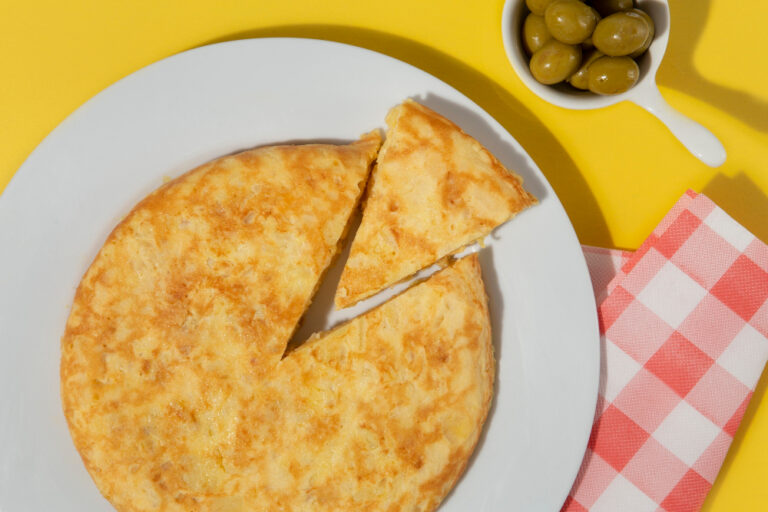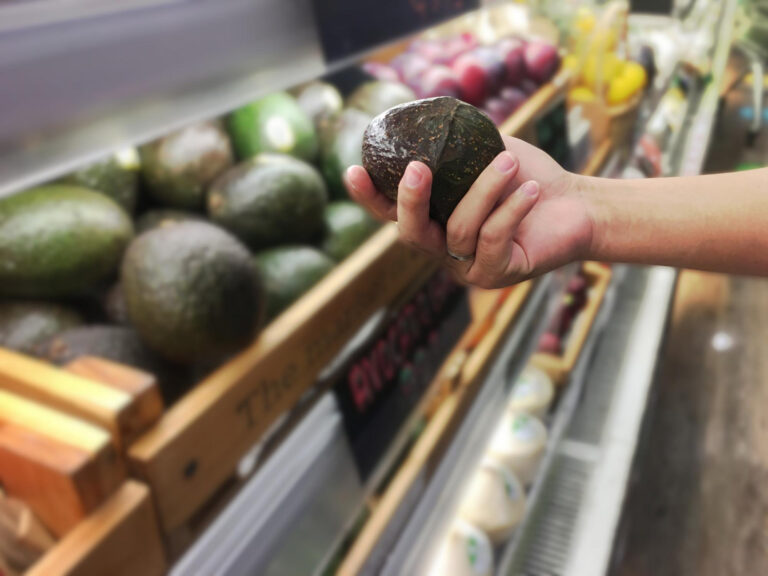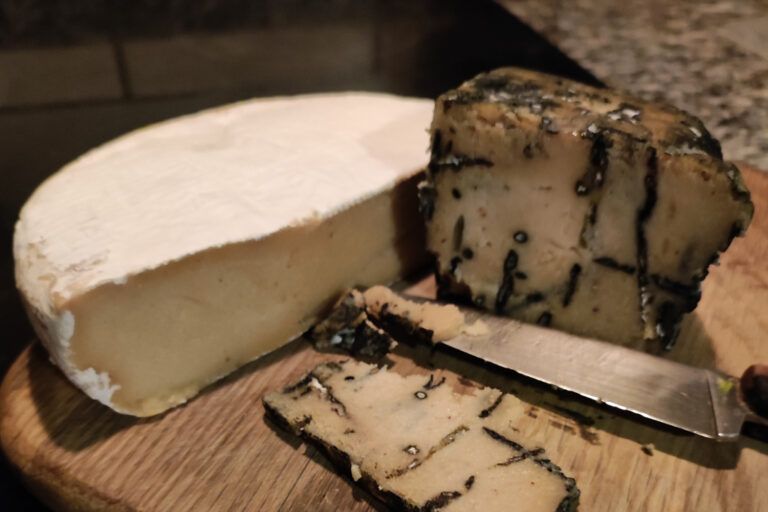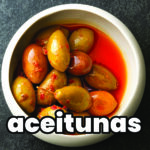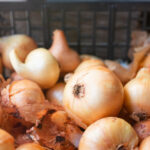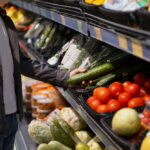The Best Fluffy Pancakes recipe you will fall in love with. Full of tips and tricks to help you make the best pancakes.
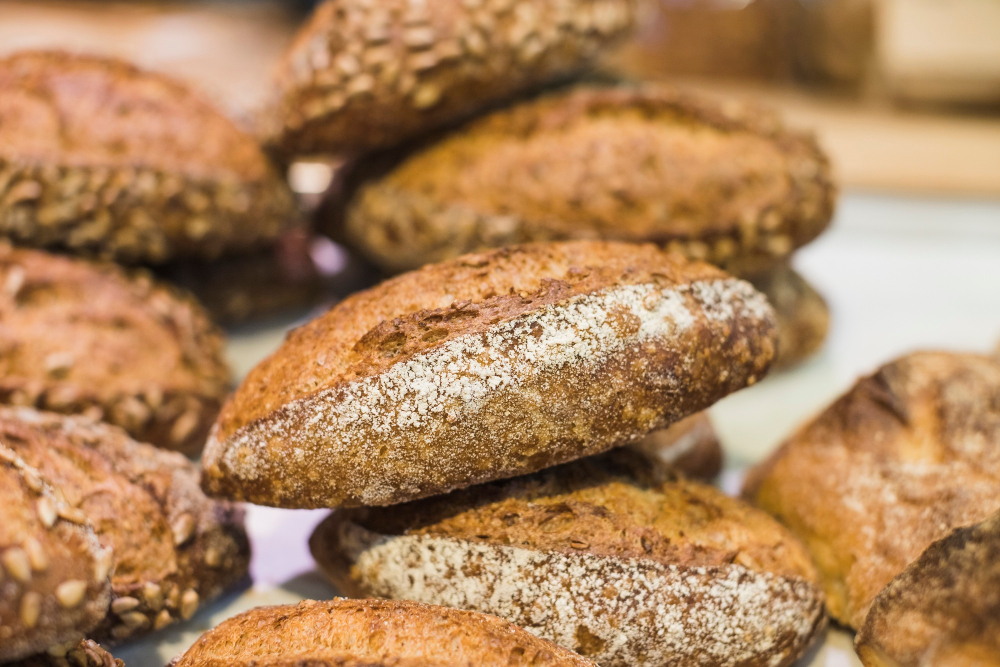
Bread (pan) is a staple in the Spanish diet and a perfect option to accompany meals or enjoy on a picnic. If you are a vegetarian or vegan visiting Spain, you will find a wealth of bread products available which when paired with a few other items will help you create wonderful tasty and filling meals.
Bread is a great fall-back for picnics. Imagine a chunk of artisan bread, crusty on the outside and fluffy inside, with fresh tomatoes, some artisan cheese or tub of humus, and sitting on the beach or in the country and just soaking in the atmosphere – Spain at its best 🙂
Buying Bread as a Vegetarian or Vegan
Bread is also nearly always vegetarian and vegan. However, it’s always worth checking as some types of bread may include milk or butter. These are typically ‘enriched’ breads (see below for some examples).
Where to Buy Bread in Spain
You will find bread widely available in Spain. Many supermarkets have their own inhouse ovens offering fresh bread and even the smallest of villages is likely to have a bakery – or a bakery van will deliver daily.
Note that bakeries (panaderías) open early in the morning and you will find some open on Sunday morning (be aware that most shops, certainly outside of the big cities, close on Sunday).
You may also find bread in petrol stations and service stations – so it really is easy to buy!
Here are the best places to buy bread in Spain:
Bakeries (panaderías)
These shops offer freshly baked bread and often have great variety and quality. Look for traditional artisan bakeries to experience local flavours. This will be fresh bread, baked that day. Bakeries typically serve you with the bread you require, a smile and politely pointing at a loaf will work!
Supermarkets
Large supermarkets like Mercadona, Carrefour, or Lidl have bread sections. Although the bread may be fresh, it is often baked from frozen dough. Some supermarkets also sell bread from local bakeries which can be a great way to sample local artisan bread. Supermarkets will probably bake bread several times during the day ensuring a regular fresh supply. Supermarkets are typically ‘self serve’ where you pick the bread you want.
Some supermarkets provide gloves for picking fresh bread which is not packaged and sometimes you will find long handled utensils for picking bread to place in bags provided. It’s normally pretty self explanatory what you are required to do – but if in doubt, follow the locals!
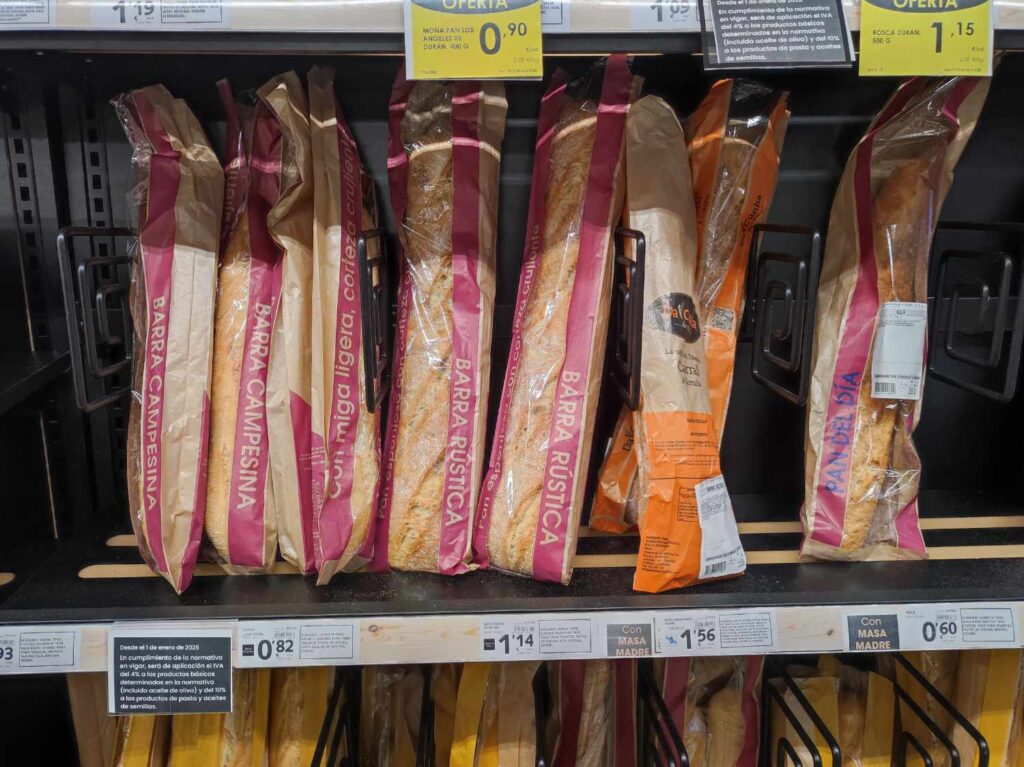
In addition to the inhouse bakery, supermarkets will also sell baked goods like ready sliced bread and bread products packaged for longer life. This may be stocked by the fresh baked items or may be stocked elsewhere in the store.
Tip: Many supermarkets have slicing machines where you can slice a loaf of bread – this is exceptionally handy when staying in self catering accommodation if you are limited on space or equipment (and is great for making sandwiches on the go!)
Local markets:
Many markets sell artisanal bread, often from small bakeries or local producers. This can be a great way to try different things.
Tips for Buying Bread
Buy in the morning: Bread is usually freshest in the morning. If you’re planning a picnic, buy early to ensure the best quality.
Storage: If you buy freshly baked bread and don’t consume it the same day, store it in a bag or if you have access to a freezer, freeze it to maintain freshness.
Avoid peak hours: Especially in small bakeries, there can be long queues around lunchtime.
Types of Bread in Spain
You will find many different types of bread available. These include:
Pan de barra: Also known as baguette, this is the most common bread in Spain. It’s usually crispy on the outside and soft on the inside. Perfect for sandwiches or to accompany meals.
Pan rústico: Denser than pan de barra, with a thick crust and a more intense flavor. Ideal for spreading with tomato and olive oil.
Pan integral: Made with whole-grain flour, this bread is a healthier option with more fiber and an earthier flavor.
Pan de molde: Similar to sliced or sandwich bread in other countries. It is available in white, whole-grain, and crustless versions.
Pan sin gluten: Available in many bakeries and supermarkets for those with gluten intolerance or allergies.
Regional specialties: For example, Galician bread (pan gallego), known for its spongy texture and thick crust, or Catalan “coca,” which is flat and often sweet.
Tip: It’s not ‘that’ unusual to find artisan bread that can be purchased in chunks, for example half or quarter of a loaf.
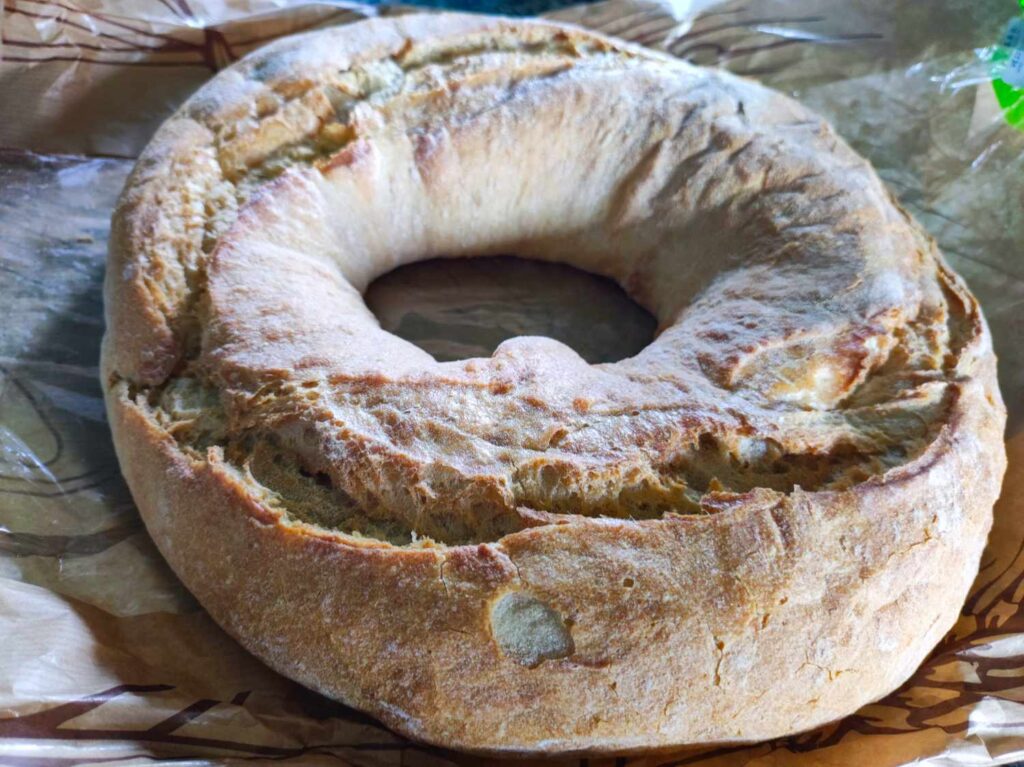
Differences Between Freshly Baked Bread and Sliced Bread
This is probably no different to anywhere else in the world! These are two very different types of bread, each with its own use.
Freshly baked bread: It has a crunchier texture and a more natural flavour. It’s best eaten on the same day or the next. It’s typically unsliced (although you can use a slicing machine in store, see above) and is great as part of a meal.
Sliced bread (pan de molde): More practical for making sandwiches and has a longer shelf life due to preservatives. Sliced bread is certainly convenient, no slicing required, comes in it’s own bag plus it’s relatively low cost-
Buying Bread as a Vegan
Ask about ingredients: If you are vegan, ensure that the bread does not contain lard, milk, or eggs. Most breads in Spain are vegan by default, but it’s always good to confirm.
Breads for vegans to AVOID include include:
- Brioche-style breads: These often contain milk and butter for a soft, enriched texture. They may also include eggs.
- Croissants and similar: These often contain butter (however you will find some made with olive or vegetable oil instead), some ‘stuffed’ croissants may contain meat or fish.
- Ensaimada: A sweet, spiral-shaped pastry from Mallorca, typically made with lard, though some versions use butter or margarine.
- Pan de leche: A sweet milk bread that contains milk and sometimes butter.
- Bolillos or similar enriched rolls: Occasionally made with milk for a softer crumb.
- Roscones: Traditional holiday bread, like the “Roscón de Reyes,” can contain milk, butter, and eggs.
Be cautious with specialty breads: Some breads may contain meat derivatives, such as lard (“manteca”), cured meats (in stuffed breads), or even meat broth in certain artisanal recipes. Always check the ingredients if unsure.
Useful Vocabulary
Here are some words for types of bread in Spanish
- Pan integral: Whole-grain bread
- Pan sin gluten: Gluten-free bread
- Pan de molde: Sliced bread / Sandwich bread
- Barra de pan: Loaf of bread
- Pan artesano: Artisan bread
- Horno: Bakery (also oven)
Useful Phrases for Buying Bread
Here are some phrases you can use in bakeries and their translations:
- ¿Este pan contiene leche o mantequilla? – Does this bread contain milk or butter?
- ¿Es este pan apto para veganos? – Is this bread vegan-friendly?
- ¿Qué panes tienen hoy? – What breads do you have today?
- ¿Está recién hecho este pan? – Is this bread freshly baked?
- ¿Cuánto cuesta una barra de pan? – How much does a loaf of bread cost?
- Quiero una barra de pan, por favor. – I would like a loaf of bread, please.
- ¿Tienen pan sin gluten? – Do you have gluten-free bread?
- ¿Hay pan integral? – Is there whole-grain bread?
Now… over to you!! What tips do you have for buying (and storing if you are in self catering accommodation) bread in Spain? Do you have a favourite type of bread, any special bread based meal ideas suitable for vegetarians and vegans? Share below 🙂 We love to hear from you!



